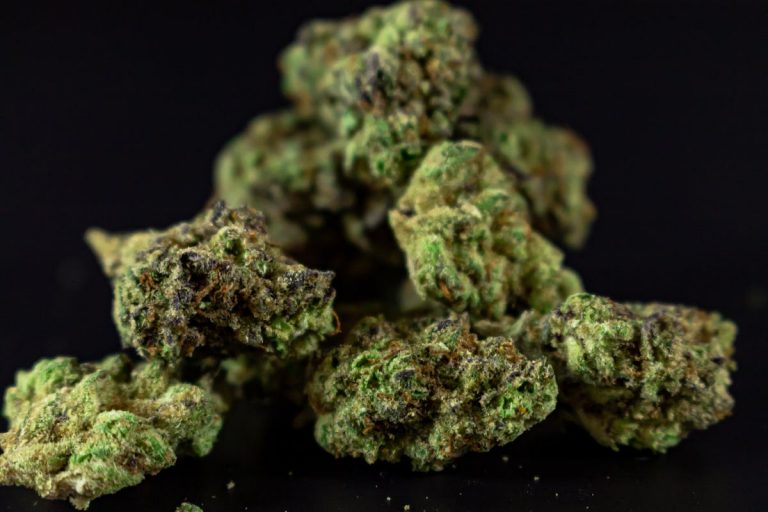The complex issue of drug trafficking in the United States is underscored by staggering statistics, with synthetic opioids such as fentanyl contributing considerably to the over 107,000 drug overdose deaths reported in 2022. Yet, as the National Drug Control Strategy reveals an estimated $100 billion annual revenue generation from drug trafficking, it becomes evident that the issue is multi-faceted. Despite the intensified law enforcement along key routes, including the U.S.-Mexico border, the persistent accessibility of narcotics continues to fuel addiction, violence, and socio-economic disruptions, warranting further exploration and broader discourse.
The Prevalence of Drug Trafficking
The clandestine world of drug trafficking, a prevalent scourge in American society, has left an indelible mark on the country’s socio-economic landscape. The drug trade’s insidious influence has permeated every stratum of society, fueling violence, corrupting institutions, and undermining public health.
An analytical examination of drug trafficking trends reveals a complex, dynamic scenario. Changes in supply and demand, strategic shifts by trafficking organizations, and the relentless drive for profit all contribute to a constantly evolving landscape. The rise of synthetic drugs, the growing popularity of prescription medications, and the ongoing opioid crisis all shape the market dynamics, necessitating continual adaptation by law enforcement agencies.
The trafficking routes offer a geographical perspective on the problem. The vast, porous borders of the United States, particularly with Mexico, have historically been exploited by traffickers. Interstates and highways serve as key conduits for moving drugs from source regions to consumer markets. However, the advent of the digital age has seen a shift towards online platforms and darknet markets, adding another layer of complexity to an already intricate problem. This transformation underscores the adaptability and resilience of drug trafficking networks, and the immense challenges faced by those tasked with dismantling them.
Major Drug Types Involved
Major drug types involved in trafficking operations across the United States vary widely, ranging from traditional substances like cocaine, heroin, and marijuana to synthetic drugs such as methamphetamines and fentanyl. Cultural perceptions greatly influence the prevalence and distribution of these substances. For instance, marijuana, now legal in many states, was once a considerable portion of the trafficking trade. However, its acceptance in society has decreased its illicit trade, thereby shifting drug traffickers’ focus towards other substances.
On the other hand, the growing opioid crisis highlights a surge in the trafficking of synthetic drugs like fentanyl. This potent synthetic opioid, often mixed with other substances, presents considerable enforcement challenges. It’s not only more difficult to detect but also poses higher health risks, making it a double-edged sword for law enforcement agencies.
Lastly, methamphetamines and cocaine continue to hold a considerable position in the drug trafficking landscape. Despite decades-long efforts to curb their trade, these substances remain prevalent due to their addictive properties and the high profits involved in their illicit trade. The varied nature of these drugs and their societal impacts underscore the complexity of drug trafficking in the United States.
Impact on the United States Economy
The economic implications of drug trafficking in the United States are multi-faceted, extending beyond the direct costs associated with law enforcement and healthcare. The illicit drug trade also has implications for employment, creating a parallel economy that may distort labor markets. Moreover, the intersection of drug trafficking with national security issues introduces additional economic impacts that warrant careful investigation.
Economic Costs of Drug Trafficking
While it may not be immediately apparent, drug trafficking imposes substantial economic costs on the United States economy, influencing various sectors in both direct and indirect ways. The economic impact of drug trafficking is multifaceted, reflecting in decreased productivity, increased healthcare expenses, and heightened law enforcement costs.
The drug trafficking profits, while lucrative for the criminals involved, have detrimental effects on the overall economy. These profits, often billions of dollars annually, are primarily funneled back into the illicit drug trade, further perpetuating the cycle of drug abuse and addiction. Consequently, these funds are siphoned away from the legitimate economy, stunting economic growth and development.
Furthermore, drug trafficking imposes an enormous burden on the public health sector. The healthcare costs associated with drug addiction and related health complications are staggering, straining the resources of hospitals, clinics, and public health programs.
Additionally, the law enforcement and judicial systems face increased costs as they combat the drug trade. This includes the expenses related to investigations, prosecutions, incarceration, and rehabilitation programs. In conclusion, the economic costs of drug trafficking are vast and pervasive, impacting the United States economy considerably.
Drug Trade and Employment
Moving beyond the broad economic implications, it is necessary to examine the specific impact of the drug trade on employment in the United States. The illicit nature of the drug trade creates a vast, underground economic sector. This clandestine market generates employment opportunities, albeit illegal and often dangerous ones, for a significant number of individuals.
On one hand, the drug trade creates jobs in various sectors including trafficking, distribution, and sales. However, these jobs come at a high social cost as they are associated with crime, violence, and social disintegration. In addition, they are inherently unstable, as they are subject to law enforcement disruptions and inter-cartel violence.
On the other hand, the drug trade inadvertently affects legitimate employment opportunities. Funds intended for economic development and job creation are often redirected towards combating the drug trade. Also, areas with high drug trafficking activity often suffer from reduced investor interest due to perceived risks, leading to fewer job opportunities in these regions.

Impact on National Security
In reference to national security, the drug trade’s economic impact on the United States is profound and multifaceted. The financial resources amassed by drug trafficking organizations often directly challenge the efficacy of border security. Smuggling methods continue to evolve, exploiting both technological advancements and geographical loopholes, thereby straining the enforcement capabilities and resources of border agencies.
The economic burden also extends to national defense. The increasing nexus between drug trafficking and international terrorism has necessitated a shift of defense resources towards combating this hybrid threat. This diversion of defense spending could potentially compromise the ability of the U.S. to address other national security concerns.
The economic implications of drug trafficking also permeate the wider economy. Large scale money laundering associated with drug trade undermines financial institutions and destabilizes the economy. Additionally, the cost of healthcare and rehabilitation for drug users, and the productivity loss due to drug-related crimes and incarceration, impose a significant economic burden.
Drug Trafficking and Violence Rates
The relationship between drug trafficking and violence rates is a complex aspect worth investigating. It is essential to examine the correlation with homicide rates, and the broader impact this criminal activity has on community safety. In addition, the role of drug cartels in perpetuating violence remains a significant part of this discussion.
Correlation With Homicide Rates
While it might seem intuitive to assume a direct correlation, the relationship between drug trafficking and homicide rates in the United States is complex and multifaceted. Several factors influence the interplay between these elements, including socio-economic conditions, law enforcement strategies, and the inherent violence of the drug trade.
Homicide trends in the U.S. have fluctuated over the years, but a careful analysis reveals that periods of increased drug trafficking often coincide with spikes in violent crime, including homicide. However, this correlation is not necessarily indicative of causation. The escalation in homicide rates may be due to an increase in the overall level of violence rather than drug trafficking per se.
Drug enforcement policies also play a significant role. Aggressive tactics can inadvertently lead to more violence as drug dealers resort to extreme measures to protect their trade. On the other hand, effective drug enforcement can disrupt trafficking networks and reduce associated violence, thereby potentially decreasing homicide rates.
To fully understand the link between drug trafficking and the homicide rate, one must consider the totality of circumstances, including the nature of the drug trade, the impact of law enforcement strategies, and the broader socio-economic context.
Impact on Community Safety
Undeniably, drug trafficking has a profound impact on community safety, particularly when considering its correlation with violence rates. This illicit trade undermines community resilience, fostering an environment of fear and instability that extends far beyond the individuals directly involved in drug activities.
The presence of drug trafficking activities often precipitates a rise in violent crimes, including but not limited to, assault, robbery, and gang-related violence. This escalation can be attributed to conflicts between rival drug trafficking groups, disputes over drug territories, and the inherently violent nature of the illicit drug trade.
Moreover, the erosion of community safety due to drug trafficking compromises neighborhood interventions aimed at reducing crime rates. Interventions become less effective in areas where drug trafficking is prevalent, as residents may be too fearful to participate in community-based initiatives or to report drug-related crimes.
Drug Cartels and Violence
Building upon the established correlation between drug trafficking and violence rates, an exploration into the role of drug cartels is necessary. The intricate operations of cartels have a significant influence on the escalation of violence, particularly in regions where their presence is profoundly felt.
The cartel influence extends beyond the mere distribution of illicit substances. It creates a volatile environment, characterized by territorial disputes, gang wars, and enforcement of loyalty among members. The larger the cartel’s operation, the higher the tendency for violence escalation, as power dynamics and competition for control intensify.
Furthermore, cartels employ violence as a means of instilling fear and maintaining authority within and beyond their ranks. This perpetuates a cycle where violence breeds more violence, often involving innocent civilians caught in the crossfire.
Moreover, the ripple effect of this violence affects not only the immediate communities but also national security, as efforts to combat drug trafficking inadvertently provoke further hostility. Hence, in understanding the extent of drug trafficking, one must consider the integral role of cartels and their contribution to escalating violence. In doing so, a more thorough strategy can be developed to address this complex issue.
Geographic Hotspots for Drug Trafficking
Drug trafficking in the United States is not a phenomenon evenly distributed across the nation. In fact, certain geographic locations serve as hotspots for these illicit activities due to their strategic importance for drug routes and trafficking networks.
States sharing borders with Mexico, such as California, Arizona, New Mexico, and Texas, have been identified as significant transit and drug distribution areas because of their proximity to Mexican drug trafficking organizations. Similarly, Florida and other southeastern states provide a convenient entry point for drugs from South America and the Caribbean.
Urban areas are also not exempt from this issue. Major cities like New York, Chicago, and Los Angeles are prominent nodes in these trafficking networks, as their dense populations and extensive transportation systems facilitate both distribution and concealment.
It’s essential to note that these hotspots are not static. They evolve in response to law enforcement activities, shifts in demand, and changes in the international drug landscape. This underscores the complex, adaptable nature of drug trafficking networks and the importance of ongoing research to understand their dynamics. This understanding can help formulate more effective strategies to disrupt these networks and reduce the impact of drug trafficking on our communities.
Government Efforts to Curb Trafficking
A considerable amount of resources have been invested by the U.S. government in efforts to curb drug trafficking within the nation. To tackle this complex issue, a multi-pronged enforcement strategy has been adopted, integrating intelligence, surveillance, and law enforcement capabilities.
The approach combines legislative measures, such as stringent laws and harsh penalties for drug trafficking offenses, with proactive enforcement strategies. This includes inter-agency collaboration, increased patrolling, undercover operations, and crackdowns on drug cartels. The High Intensity Drug Trafficking Areas (HIDTA) program, for instance, enhances the sharing of information and coordination among federal, state, and local agencies in identified vital regions.
Simultaneously, the government has also invested in prevention and treatment programs, recognizing that demand reduction is an essential part of a thorough anti-drug strategy. These efforts are aimed not just at punishment, but also at reducing the overall demand for illicit drugs, thereby affecting the profitability of drug trafficking.
These government initiatives reflect a commitment to a balanced approach in combating the drug trafficking problem. While enforcement and legislative measures aim to disrupt supply chains and deter potential traffickers, prevention and treatment efforts aim to address the demand side of the equation.
Role of International Borders
The significance of international borders in the context of drug trafficking cannot be overstated. Border security plays a pivotal role in curtailing the illicit drug trade, acting as the first line of defense against drug traffickers. However, due to the vastness and porous nature of some borders, ensuring complete surveillance and security becomes a complex task.
Cross border cooperation is indispensable in combating drug trafficking. Collaboration between different nations facilitates the sharing of intelligence, resources, and best practices, thereby enhancing the collective efficiency in tackling the menace. This is especially true for countries with shared borders, where drugs are frequently smuggled.
Yet, the role of international borders is not just defensive. They also serve as filters, separating regions of high production from areas of high consumption. Understanding the dynamics of international borders can help in strategizing effective control measures.
While strengthening border security is vital, it is equally important to acknowledge that borders can’t entirely prevent drug trafficking. Extensive strategies must consequently integrate border security with other preventive measures, like demand reduction and treatment programs. This holistic approach can greatly mitigate the impact of drug trafficking.
Effects on Public Health and Safety
Countless lives are impacted by the profound effects drug trafficking has on public health and safety. The illicit trade of narcotics not only fosters addiction but also triggers a cascade of health-related problems, ranging from infectious diseases like HIV and Hepatitis C to mental health disorders.
Public health, already stretched thin due to other health crises, is greatly burdened by the effects of drug trafficking. Resources that could be used for preventive health measures and chronic disease management are rerouted to manage addiction-related issues and their impacts.
A critical part of managing these impacts is addiction treatment. However, the pervasive nature of drug trafficking compromises the efficacy of such treatments. High availability of drugs, driven by trafficking, often leads to relapses among those who are trying to recover. Additionally, the stigma associated with drug use may prevent individuals from seeking help, exacerbating the public health crisis.
From a safety perspective, drug trafficking contributes to increased crime rates, including violent offenses, which puts additional strain on law enforcement agencies. Communities are destabilized, and the sense of security erodes, impacting the overall wellbeing of the populace. Consequently, the effects of drug trafficking on public health and safety are far-reaching and multi-faceted.
Frequently Asked Questions
What Is the Typical Punishment for Drug Trafficking in the United States?
The typical punishment for drug trafficking in the United States is determined by mandatory minimums and sentencing guidelines, which consider the type and quantity of drugs, prior convictions, and whether death or serious injury resulted.
How Does Drug Trafficking Influence the Youth Population?
Drug trafficking considerably impacts the youth population, often through peer pressure, leading to substance misuse. This underlines the necessity for increased addiction awareness and preventative measures to counteract these harmful influences within this vulnerable group.
What Is the Role of Technology in Facilitating Drug Trafficking?
Technology plays an integral role in facilitating illicit activities, including drug trafficking. Enhanced cybersecurity measures are required to combat this issue, while the rise in digital currency usage presents additional challenges for regulation and enforcement agencies.
How Does Drug Trafficking Relate to Other Crimes Like Human Trafficking?
Drug trafficking connections with other illicit activities, such as human trafficking, are significant. Crime overlap often occurs as these illegal operations share similar networks, resources, and methods, thereby mutually reinforcing and amplifying their respective impacts.
Have There Been Any Notable Cases of Celebrities Involved in Drug Trafficking?
Yes, there have been notable instances of celebrity involvement in drug trafficking. For example, actor Tim Allen faced legal repercussions for drug trafficking in the 1970s, demonstrating that fame is not immune to such criminal activities.





